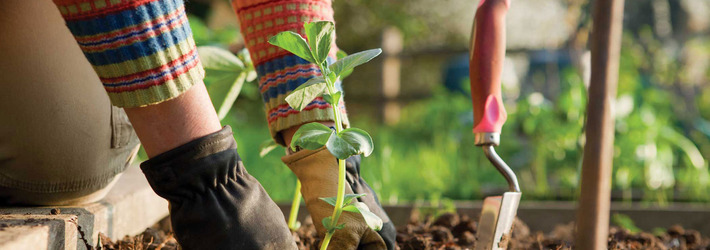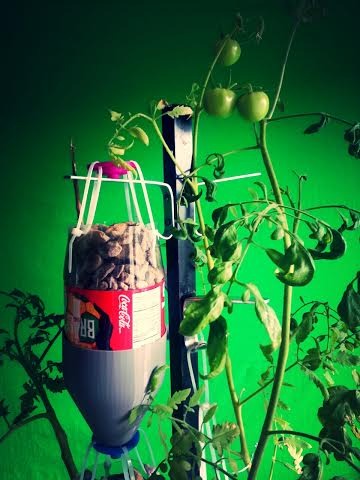- Blog
- Interviews
- Makers use 3D printing to spur healthy lifestyle at no extra cost
17 Sept 2014
Makers use 3D printing to spur healthy lifestyle at no extra cost
Interviews

Since the Maker Movement has gathered an increasing amount of momentum, we tend to hear more and more about this curious, tech-influenced community of hobbyists, enthusiasts and amateurs, who are driven by innovative technologies (such as 3D printing) to create new products and produce value in the community.
This time we’re talking to Lucy Morrissey, director of social media for 3Dprintler, about their unique 3Dponics project, which is the first 3D-printable hydroponics system. It's also Internet-enabled, and soon it will be solar-powered.
3Dprintler started originally with Michael Golubev, our CEO, getting a 3D printer as a gift and experimenting with it for some time. His fascination with 3D printing grew, and eventually he started to see ways in which we could use this 3D printer to benefit others and do something different.
So, we started printing brand logos for local companies and upgrades for the DJI Phantom quadcopter, among other things, before moving onto 3D printing parts for 3Dponics.
I know there is a definite interest in 3D printing in all of those places, because our team members there are fairly busy with orders and inquiries. Our Serbia team was asked to 3D print a mask for an independent theatre there in Belgrade, which turned out wonderfully and was used in a popular production.
In terms of interest in 3Dponics, just last week we had our friend in Russia, an avid gardener who has been growing his own food for years, contact us, interested in building a 3Dponics system. We’ll be sending one his way soon.
Personally, I can say more about the makers here in Ottawa. There are plenty of creative people here. 3D printing, in particular, is becoming more and more popular.
We have the Mini Make Faire in Ottawa that first happened in 2010 and there was such a great turn out and response that they continued to have it here. We’re actually attending this year’s Mini Maker Faire (August 16 th and 17th). We have the opportunity to show more people 3Dponics and see what the other makers here are up to. There’s certainly a lot of interest and excitement surrounding the Mini Maker Faire.
Additionally, we have locals calling and looking to have various items 3D printed. When we were about to launch 3Dponics on Kickstarter, we went to the local Farmer’s Market and talked to fresh food lovers there—people who we thought would appreciate the idea of 3Dponics, and they were definitely intrigued by it.
It certainly will. We have more creators than ever before. Everybody wants to stay up to date on changing technology, so more people are getting involved in inventing, designing and making new things. I think the maker movement will propel us forward in that we’ll be learning and inventing things at a much faster pace in the years to come.
The entire process is exciting. It’s thrilling to see something evolve from an idea, something you’ve only imagined, into a tangible object.
We try to stay updated on what people want and what people need, and we like to create things that aren’t like anything else. For instance, there are many hydroponics systems, yes, but ours is made up of 3D-printed parts, which is something different and cool. What’s more, now 3Dponics is an Internet-enabled system AND soon it’s going to be solar-powered.
We find inspiration in everyday activities. We look for ways to make activities and tasks more efficient. In terms of gardening: when you grow with 3Dponics (since it’s an Internet-enabled system and soon-to-be solar–powered system), you’ll be able to monitor your garden remotely. It won’t require as much hands-on work.
3Dponics is unique for primarily 3 reasons (though there are others!): it’s the first 3D-printable hydroponics system, the first Internet-enabled 3Dponics system and soon it will be the first solar-powered 3Dponics system. It’s constantly evolving and we are always trying to improve the system. It’s also unique because it is not only us trying to improve the system; we encourage all users to join in to help improve it and build the community.
We are not selling 3Dponics – the design files are totally free. But the people interested in 3Dponics are the folks who love technology and 3D printing; folks who love to garden; people who love promoting fresh, healthy organic eating; and people who are conscious of the environment and keeping it healthy. There are a lot of different people interested in and already using the system—and from all over the place! It’s wonderful.
3D printing is definitely a big part of the maker movement and becoming a bigger part. It’s another way to create. It’s a way to first imagine, then design, then bring something to life—in mere hours sometimes!
We’ve designed and 3D printed components and upgrades to make 3dponics a more interesting and more efficient hydroponics system. It takes about 5 hours to print all the 3D-printable parts. And it costs very little (at a penny per day to operate), especially when you consider what you’re getting out of it: fresh, organic produce that is otherwise pretty pricey.

We’ve had issues with IP infringement in 3D printing in the past. We’ve had our design stolen, printed and sold for profit. We came out on top (for more on this, please see here)
We think it’s important to be able to protect your files, of course, if that’s what you want to do. However, with 3Dponics, we want it to remain completely open source and available for everyone. We don’t see an issue in keeping it an open source system. We want people to use the files, build the system, improve it and share what they know. With 3Dponics, it’s all about building the community of users.
We’ve printed several things: bottle openers, small tables, key holders, a company logo for 3Dprintler, etc.
We wanted to involve as many people as possible and get people excited about the project. It seems, these days, Kickstarter is great for doing that. A lot of open-minded, innovative, creative people explore Kickstarter, so it really was the perfect place to launch.
Yes, because additive manufacturing is already changing the way we do so much, and it’s already applied in such a wide range of industries, from the medical industry to the automotive industry.
In such a short time, 3D printing and 3D printers (desktop, at least) have become so much more accessible for the average person.
I think it’s going to be become even more prevalent in the years to come.
I think more and more people will become interested in 3D printing and customizing their belongings. I think, too, all these different industries will continue to use 3D printing and the technology will become even better, so the ways in which we apply it will become more apparent. We won’t need to ship a part off and wait weeks if it’s broken. We’ll be able to have a 3D printer print a replacement part not too far from our own home (just as an example).
See More 3D Print Models From 3Dprintler
*Note: Since we spoke to Lucy, the 3Dprintler team has turned 3Dponics into their full-time project and can be reached at info@3dponics.com
Comments